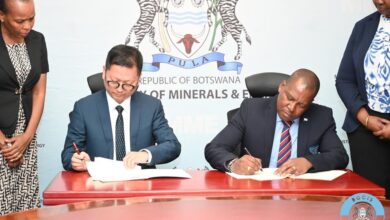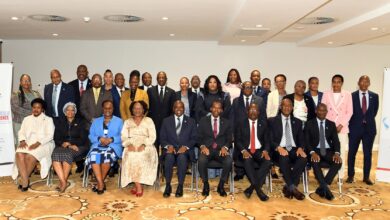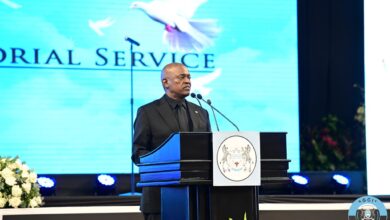Response to Parliamentary question

Question No. : 516 (1)
Asked on : Monday 16th August, 2022
By : Mr T. B. Lucas M.P. (Bobonong)
QUESTION
To ask the Minister for State President to state:
(i) the current state of the Economic Stimulus Programme (ESP) of 2011;
(ii) if there has been evaluation of the ESP and if so, to state the major findings of the evaluation;
(iii) if the ESP of 2011 has achieved the objectives for which it was created; and
(iv) the number of incomplete ESP projects to date and the reasons why they are incomplete.
ANSWER
(i) Mr. Speaker, the Economic Stimulus Programme (ESP) was introduced on 16th November 2015, and not in 2011, as a strategic response to minimize the effects of the global economic recession which had severely subdued the domestic economy. The programme was meant to achieve three main objectives:
(a) Stimulate Economic Growth (at the time);
(b) Accelerate Job Creation and;
(c) Promote Economic Diversification.
The major areas identified to drive the programme were; Infrastructure development through infrastructure backlog eradication in primary schools, road construction, improvements in Agriculture through commercialization and integration of the sector; Tourism; Manufacturing Services through the establishment of Special Economic Zones and Economic Diversification Drive (EDD); Accelerated Land Servicing and Re-inventing Government through reforms across the public sector. Various Ministries were assigned responsibilities to implement the programme.
Mr. Speaker, the ESP was a three year programme which was implemented in earnest from 2016/2017 to 2018/2019 Financial Years. The Programme officially terminated on 31st March 2019 which marked the end of the planned implementation period.
(ii) Mr. Speaker, an internal evaluation of the ESP was conducted by Government at the end of the programme and the major findings of the evaluation were as follows:
• Delays in procurement processes and lack of technical capacity in some Ministries’ Project Implementation Units;
• Inadequate monitoring of projects by implementing Ministries and Departments;
• Under-performance of contractors and consultants;
• Late delivery of materials, especially face bricks when Lobatse Clay Works company shut down;
• Relatively slow implementation of EDD;
• Unbundling of projects which was seen to make electrical and mechanical components unattractive, hence failure to engage contractors on time; and
• Lack of project readiness by implementing Ministries and Departments.
(iii) Mr. Speaker, overall there was some major achievements in respect of projects under the ESP. Out of the 7 520 planned projects, and as at the end of the programme in March 2019, a total of 5 914 (78.6 percent) projects had been awarded, of which 3 879 (65.6 percent) had been successfully completed. The major achievements include decongesting of A1 highway by constructing roads infrastructure which include Gaborone-Boatle, Dibete-Machaneng, Serule-Mabeleapudi; also backlog eradication in 123 Primary Schools, expansion and maintenance of infrastructure in Secondary Schools and electrification of 34 new villages and expansion of electricity connections in 60 villages as well as three village infrastructure projects (Gabane, Tutume and Kang). These major projects stimulated village economies as jobs were created during construction stage, and land servicing and electrification availed more land for economic activities in the medium to long term period.
The targeted jobs for the infrastructural projects were 38 000 and at the end of the programme, 28 662 people had been engaged under the various ESP projects across the country, with 99.3 percent employed being Batswana.
Mr. Speaker, there was however, relative under-performance under the objective pertaining to Economic Diversification Drive. On average, the monthly procurement reports showed a small percentage of procurement from local manufacturers, which showed that Ministries and Departments used only around 4 percent of their budgets on this. This was attributed to a number of factors, including the slow implementation of the initiative by Procuring Entities to purchase from local manufacturers/ producers citing poor quality, exorbitant pricing and non-accreditation of locally manufactured products.
Mr. Speaker, to address the key impediments observed under the ESP, Government has taken some measures to improve performance in future. These include introduction of the Change Management Framework to guide any new Government reforms, the Review of the procurement procedures which resulted in the enactment of the Public Procurement Act and the Economic Inclusion Act, which put procurement from citizen-owned businesses top priority as well as improving the turnaround time for the assessment of the Environmental Impact Assessment (EIA) Reports, among others.
(iv) Mr. Speaker, as I stated earlier, the ESP came to an end on the 31st March 2019. At the material point, and in addition to the projects that had been completed, 2 035 projects were still on-going at various stages, while 1 611 projects had not started. However, even though the programme had technically ended, the on-going projects continued to be implemented as part of the National Development Plan 11. The projects that had not started were re-prioritized alongside new proposals for NDP 11, consistent with the available resources. It is therefore not easy to single out all the projects that were originally under ESP to say how many of those currently remain incomplete as they have since been integrated within the normal project planning process.
Mr. Speaker, the reasons why some projects were incomplete when the programme ended, are largely as revealed by the evaluation findings I alluded to earlier, mainly; delays in procurement processes and lack of technical capacity in some Ministries’ Project Implementation Units. The other reasons were market based and not necessarily on the side of government, such as non-performance by contractors and late delivery of building materials. The increased construction under ESP created excess demand of face bricks which local suppliers could not meet. This, to some extent, compromised the benefits that could have been derived from the manufacturing and the construction sectors.





